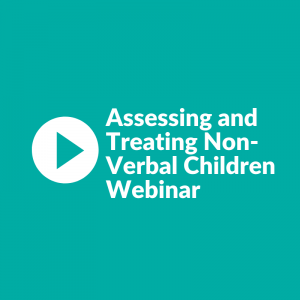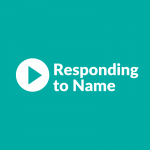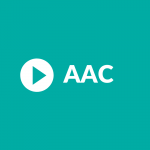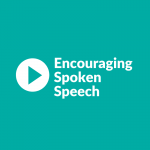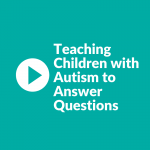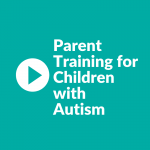Teaching Early Functional Communication Skills
Description:
Overview:
Task Analysis (How To):
- Establish Joint Attention and Engagement: Student will establish joint attention and engagement in an activity with the speech-language pathologist.
- Introduce an AAC System (if needed): Student will use an alternative means of communication for functional communication skills if speech skills are not adequate.
- Improve Imitation Skills and Work Toward Speech: Student will imitate motor movements and eventually speech sounds.
- Teach Basic Communication Skills: Student will use language to communicate for a variety of purposes in various settings and with various communication partners.
- Parent/Teacher Training if Possible: The SLP will include parents and teachers in the therapy process whenever possible.
Activities:
For young children, we often must work to gain their attention before we can begin with therapy. I will mention here that you do not HAVE to have established joint attention in order to begin with an AAC system. If the child will allow hand-over-hand assistance with the AAC system, you can actually use that to establish joint attention and draw him out of his bubble a little bit.
So let’s talk about some great ways to establish that joint attention! Here’s the first resource. It’s a quick video on how to find motivators and establish joint attention:
In addition, we have another video that is specifically about helping a child respond to his name. This is not a pre-requisite skill for working on the other things mentioned here, but it certainly can help.
Any child who is not able to communicate with those around him using spoken speech should be considered for AAC. There are no pre-requisite skills that must be obtained before AAC can be tried. Communication is a basic human right and it is our job to make sure that everyone has the ability to use it.
Children with autism are no different. Even if the child does not seem interested in communicating, it is our job to try to find an AAC system that will support that child so that when he is ready to communicate, he will have a means to do so.
For more information about getting started with AAC, click here:
Even if you have already established a great AAC system for the child, we must continue to pursue spoken speech. We can start this by working on improving imitation skills in general. Being able to work on speech skills will depend a lot on the child’s ability to imitate us. Establishing joint attention is a great first step for this and then it’s all about seeing what the child can do. If the child can imitate speech sounds right away, move forward with that. Work on speech skills the same way you would any other child. Keep in mind that some young children who aren’t speaking may have apraxia so you may need to tap into your Childhood Apraxia of Speech resources for them.
If the child is not able to imitate speech sounds, you may want to try having them imitate other actions instead. Sometimes, children find it easier to imitate motor movements such as clapping, stomping, or jumping. Then, you can gradually move toward having them imitate motor movements that involve the mouth (like touching their mouth or sticking out their tongue) and then mouth movements that make sounds (like smacking the lips or clicking the tongue). That will help get them ready for imitating speech sounds. Keep in mind that we’re not saying that imitating sound effects will somehow improve their speech skills. We’re just using this as a way to practice imitation before they’re ready to imitate speech.
Here is a video that will give you some tips on encouraging a child with autism to use spoken speech:
Ok, now we get to the good stuff. This is where all that functional communication magic happens. In this area, we’ll work on teaching any types of functional communication that the child needs. We often start with basic requesting with children with autism because we can find things they are highly motivated by and have them request them. That’s great to do but we must also follow up by working on other basic communication skills as well.
Another great way to start is by looking at the times when the child exhibits challenging behaviors at home or in the classroom. What is the child trying to communicate? How can we replace those maladaptive behaviors with positive, functional communication skills that will help the child get that need met without acting out?
Here is an overview of how therapy for this aspect of autism may look:
We also want to look at using play with this population as it will help with symbolic language skills as well as social skills. Here’s an hour-long webinar recording about using play in therapy to promote language development: 
Another area to look at is functional vocabulary. Children need to know what words mean and how to use them in everyday situations. Here’s a resource about teaching functional vocabulary: 
And finally, we have a resource about helping children with autism to answer questions:
In addition to these skills, you’ll want to work on any other basic communication skills that the child is lacking, including social skills. Take a look around the rest of the resources in the Therapy Activity Database for information on teaching other language skills.
One very common issue in children with autism and other minimally-verbal children is their limited ability to transfer skills from one setting to another. This includes from one communicative partner to another. That means, that even though we teach a child to use a skill with us, it doesn’t necessarily mean that she will automatically be able to do that skill with someone else. Or just because she can do it in the therapy room, doesn’t mean she’ll be able to do it in the classroom.
For this reason, it is incredibly important that children with autism be supported by an entire team of adults, not just one therapist. Whenever possible, you should be thinking about ways to incorporate the rest of this child’s team in your therapy. I know that you won’t always have immediate access to these people so you may have to get creative. Send home notes or use a secure platform to send videos to the parents about what’s going on in therapy. Train teachers how to implement the strategies that you’re using in therapy in their classrooms. And do some push-in therapy! I know that can be difficult but it really is crucial that these children practice new skills in a variety of settings and with a variety of communication partners.
Here’s a video that will help give you some ideas of how you can incorporate parent training into your therapy for this population:
Troubleshooting:
What do you do if these things don’t work the way they’re supposed to? Well, nothing’s ever easy, is it? Try these great troubleshooting tips that some of our other members have found helpful. Click the problem to drop down the link to the solution.
Sometimes it can be most helpful to see some brainstorming of therapy ideas for specific cases. Here are a few short videos that will walk you through some therapy ideas for specific cases that a few of our members have had in the past:

